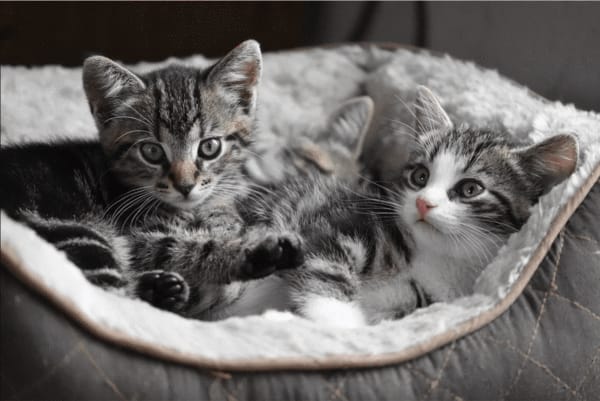You may have fallen in love with your new kitty at first sight -- while also wondering why he doesn't seem to respond to household noises, birds chirping, or even your own voice. This quirk of behavior may not be mere aloofness; it may actually be a condition called cat congenital sensorineural deafness. Let's take a look at this not-uncommon situation to understand why it occurs, how genetic factors play a role in it, and what you can do to keep your deaf cat as safe and happy as possible.
Causes of Feline Deafness
Deafness may occur in cats for a variety of different reasons, either from birth or at any point in later life. The two main categories of
feline deafness include:
-
Conductive deafness - This kind of deafness stems from problems with the structures in the ear that relay vibrations through the ear canal. An ear infection of ear canal blockage may cause temporary deafness. Serious damage to the eardrum or the delicate bones inside the ear can cause sudden, permanent deafness.
-
Sensorineural deafness - This kind of deafness involves the hair-like nerve cells and other neural structures that send vibrations to the brain or even the brain itself, which interprets these signals as sound. Excessive exposure to loud noise, a head injury, or drugs that are toxic to nerve cells can all cause sensorineural deafness. In the case of congenital sensorineural deafness, cats are born with neural defects that make hearing in one or both ears impossible.

The White Masking Gene
What factors in your cat's genetic makeup could have led to his being born deaf? It's no coincidence that many (though not all) white cats suffer from congenital sensorineural deafness -- especially white cats with blue eyes. A lack of the pigment known as melanin is responsible for both the white fur and the blue eyes. A particular gene called the
white masking gene prevents the creation of melanin-producing cells. Unfortunately, these cells are also a component of the cat's inner ear. When they're not there, the inner ear stops functioning properly, resulting in deafness.
Communicating With Your Cat
Since congenital sensorineural deafness can't be corrected, what can you do to
communicate with your cat and help him get along without that vital sense of hearing? First of all, keep in mind that even if your cat can't hear sounds, he can still feel vibrations. Stomping on the floor or using a vibrating collar can help you get your cat's attention so you can communicate with him.
Visual cues allow you to take advantage of your cat's keen eyesight. You can
train your cat via hands signals not unlike those used in the human deaf community, or create your own broad gestures and associate them with specific commands. Don't forget that cats
love laser pointers. Try using the beam of a laser pointer to lead your cat around or turn his attention to specific objects.
Safety Measures for Deaf Cats
Deaf cats may need extra protection against life's many potential hazards, especially outdoors in heavy-traffic areas. Training your cat to
walk on a leash will allow you to accompany him and ensure his safety on these adventures. Around the house, watch where you're walking! Heavier steps of tapping noises can give your cat some extra warning of your approach.
Rest assured that you and your deaf cat can have a wonderfully fulfilling life together. Just take some extra steps to get to know him, relate to him, and watch out for his well being!













